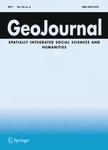版权所有:内蒙古大学图书馆 技术提供:维普资讯• 智图
内蒙古自治区呼和浩特市赛罕区大学西街235号 邮编: 010021

作者机构:Amsterdam Study Centre for the Metropolitan Environment (AME) Department of Geography and Planning University of Amsterdam Amsterdam The Netherlands
出 版 物:《GeoJournal》 (地学杂志)
年 卷 期:2000年第51卷第1/2期
页 面:3-13页
学科分类:0709[理学-地质学] 081803[工学-地质工程] 07[理学] 08[工学] 0818[工学-地质资源与地质工程]
主 题:Capital cities Arteries Public buildings Urban design National identity Residential buildings Slums
摘 要:From the 1850s onward, the quest for an impressive capital city was answered by Haussmann s transformation of central Paris. His interventions combined the cutting of new arteries, slum clearance and embellishment. His approach had a great visual impact on foreign visitors. The Prefect made use of the proven instruments of axiality and proportion to create an awe-inspiring townscape. One of the highlights was the new Opera. Its surroundings were razed to place it in a proper perspective. The townscape of Paris soon found its emulators in Brussels, Budapest and Rome, which copied Haussmann s strategy. London and Amsterdam were tempted to follow. But most plans for new boulevards and slum clearance failed. In both cities, central areas fell prey to commercial land use, pockmarked with slums. Civic pride did provide the ingredients deemed necessary for a capital. But these lacked the scenography to place them in a proper perspective. Such a scenography required political, financial and legal tools to intervene in the built environment that were available in nations with a centralist and authoritarian political system. They were absent in liberal laissez-faire and decentralist nations such as Great Britain and The Netherlands. The lack of powerful intervention in central London and Amsterdam caused a flight to the city s fringes, where estate owners occasionally realised suburban design gems. In their colonies, however, both nations succeeded in creating impressive new capitals.